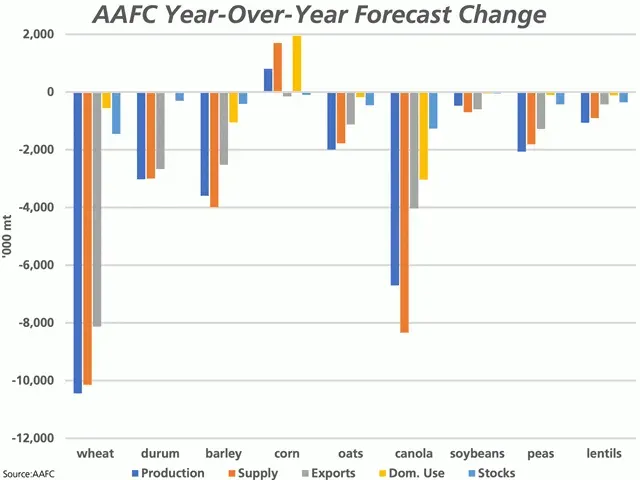AAFC Statistics: Integrating History into NFL Records

AAFC statistics are now officially recognized as part of NFL history, a significant move that highlights the legacy of the All-America Football Conference, which thrived from 1946 to 1949. This integration means that the exceptional records set by teams like the Cleveland Browns and individual legends such as Paul Brown and Marion Motley will now influence the football league records we refer to today. The Browns not only dominated the AAFC by winning all four championships but also made a historic mark by claiming the NFL championship in their very first year in the league. Moreover, these added AAFC statistics will elevate the achievements of players such as Marion Motley, who now holds the impressive title of all-time leader in yards per carry. Overall, with this decision, the NFL continues to evolve, enriching its storied narrative by embracing these vital contributions to the game’s history.
The inclusion of statistics from the All-America Football Conference marks a pivotal moment for both fans and historians of professional gridiron football. By officially recognizing these performance metrics, the NFL not only honors the achievements of teams like the Browns and players such as Paul Brown and Marion Motley, but it also sheds light on previously overlooked aspects of NFL history. This newfound acknowledgment enriches the context of early professional football and allows for a more complete examination of the league’s evolution. The legacy of coaches and players from the AAFC now intertwines with the modern NFL, creating a deeper understanding of how the relentless pursuit of excellence has shaped the football landscape. This development is essential for understanding the broader narrative of the sport and its impact on the culture of football in America.
The Significance of AAFC Statistics in NFL History
The integration of All-America Football Conference (AAFC) statistics into the NFL’s official records marks a pivotal moment in the documentation of professional football history. By approving this change, the league owners have acknowledged the importance of the AAFC, which operated from 1946 to 1949, as a vital part of football’s legacy. This decision allows fans and historians alike to appreciate the performances of legendary players who once dominated the AAFC, such as Marion Motley and Otto Graham, enhancing our understanding of their contributions to the game.
This shift in records also positions the AAFC alongside other significant leagues, such as the American Football League (AFL). The AFL’s records were merged into the NFL following the 1970 season, and now the AAFC is welcomed into the fold, further enriching the narrative of teams like the Cleveland Browns. This integration not only preserves the history of football but also recognizes the achievements made during a time when the sport was evolving and gaining popularity.
Cleveland Browns: Dominance in the AAFC Era
The Cleveland Browns stand as a titan of the All-America Football Conference, clinching the championship title in each of the four seasons of the league’s existence. The team’s remarkable success during this period laid the groundwork for their transition to the NFL, where they won their first championship in 1950. This unprecedented streak solidified the Browns’ reputation in NFL history, demonstrating their prowess and preparation that allowed them to compete successfully in the larger football league.
With the AAFC now integrated into the NFL stats, the Browns’ league-leading performances will be recognized officially. This means that not only do these victories count toward the franchise’s legacy, but they also contribute significantly to Paul Brown’s coaching record. His additional wins from the AAFC reflect consistent excellence that has shaped the modern understanding of coaching achievements in professional football.
Paul Brown’s Expanded Coaching Legacy
Long revered as a pioneer in the NFL, Paul Brown’s coaching record is significantly enhanced with the inclusion of AAFC statistics. Adding 47 regular season wins and 9 postseason victories elevates him to seventh place in the all-time rankings, emphasizing his strategic genius and impact on the sport. Brown revolutionized the game with innovative tactics and training techniques that many modern teams still utilize today, making his contributions even more notable with the recognition of his AAFC successes.
This adjustment not only reflects Brown’s historical standing but also serves to illustrate the competitive landscape of professional football in his era. In his tenure, Brown led the Browns to consistent success, and these newly recognized wins establish a complete narrative of his coaching career. As his legacy continues to evolve, the acknowledgment of these statistics allows for a more profound appreciation of the challenges faced and the triumphs attained during those formative years of football history.
Marion Motley: A Hall of Fame Career
Marion Motley’s induction as the NFL’s all-time leader in yards per carry exemplifies the extraordinary talent he possessed. With his combined stats from both the AAFC and NFL totaling 4,720 yards over 828 carries, Motley averaged 5.7 yards per carry, a remarkable achievement that speaks volumes about his dynamic running style. As a fullback for the Cleveland Browns, he became a foundational player in the establishment of the franchise and its winning tradition.
Recognizing Motley’s stats within the broader context of NFL history enhances our understanding of his contributions to the game and highlights the significance of his achievements beyond just numbers. With the integration of the AAFC records, historians can now accurately account for his impact during a crucial time in football’s development, assuring that his legacy endures in the annals of the sport.
Impact of the AAFC on NFL Team Dynamics
The absorption of AAFC statistics into the NFL presents an opportunity to analyze how teams like the San Francisco 49ers and the Cleveland Browns transitioned into stronger franchises post-AAFC. The 49ers, who had a competitive history in the AAFC, adapted their strategies and player rosters to thrive in the NFL. This transition period not only affected the teams but also reshaped how football was played, with styles and strategies evolving from their AAFC roots.
The infusion of AAFC statistics helps illustrate the competitive nature of these teams and the caliber of players who existed before the formal merger. This level of detail enriches football narratives and allows fans to see the origins of team rivalries and dynamics that exist today, showcasing a more intricate understanding of how the early years set the stage for modern football.
Historical Context of the AAFC and NFL Integration
The historical integration of the AAFC into NFL history serves as a case study in the evolution of professional football. Established in a period that followed World War II, the AAFC emerged during a time of rapid growth for the sport. Its competitive nature and innovative approaches to team management brought forward fresh ideas that would eventually permeate the NFL, highlighting its role in shaping the sport as we know it.
By officially recognizing AAFC statistics, the NFL is not just preserving historical data but is also paying homage to the league’s contributions to the popularization of football. This layered historical narrative becomes crucial for both current fans and future generations, as it ensures a comprehensive understanding of football’s journey through time, reflecting both its triumphs and trials.
The Legacy of Hall of Famers from the AAFC
A multitude of Hall of Famers from the AAFC, such as Otto Graham and Joe Perry, now see their legendary achievements immortalized in the NFL record books. The merging of these records provides a fuller picture of their careers and the impact they made on the game. Players like Graham, who led the Browns to multiple championships, were instrumental in the league’s growth during the late 1940s.
Their statistics and accomplishments, once isolated within the context of the AAFC, now contribute to a merged legacy that acknowledges the profound influence these athletes had on the success of their teams and the sport itself. This recognition is vital in appreciating the evolution of player performance and the narrative of honors that accompanies football’s development.
The Future of NFL Record Keeping
The decision to incorporate AAFC statistics into the NFL’s official records heralds a new era in how the league approaches historical data. As more leagues and statistics are considered in the context of NFL history, this could lead to the reevaluation and potential integration of other leagues’ records. This is especially important for a sport defined by its statistics, where historical context deeply enriches the narrative of player achievements.
Going forward, the NFL’s commitment to maintaining a comprehensive historical record fosters a greater appreciation for the game’s past. It sets a precedent for transparency and inclusivity in recognizing contributions that built the foundation of professional football. This new era could provide fans with more stories and account for the evolution of strategies and player performance across decades.
Conclusion: A Richer Tapestry of NFL History
In closing, the inclusion of AAFC statistics within NFL history enriches the overall narrative of professional football. It brings forward stories of remarkable players and legendary coaches whose contributions had been previously overlooked. By integrating stats from the AAFC, the league not only solidifies its commitment to history but also celebrates the intricate legacy that shapes the game today.
The football community can now engage more deeply with their favorite teams and players, appreciating their full stories and the context in which they played. Such acknowledgment promotes a broader understanding of football’s impact on culture, society, and sportsmanship. Ultimately, this newfound wholeness in the NFL’s record-keeping sets a tone for the future, one where history is cherished and understood in its entirety.
Frequently Asked Questions
What are the implications of the AAFC statistics being counted toward NFL history?
The inclusion of AAFC statistics in NFL history provides a more comprehensive understanding of professional football records, enhancing the historical significance of the league. By recognizing AAFC stats, the NFL solidifies its narrative, ensuring that achievements from teams like the Cleveland Browns and players like Marion Motley are officially part of football league records.
How did the Cleveland Browns perform in the AAFC?
The Cleveland Browns dominated the All-America Football Conference, winning the championship in all four years of the league’s existence from 1946 to 1949. This strong performance established them as a powerhouse before transitioning to the NFL in 1950, where they also won a championship.
Who is the all-time leader in yards per carry in NFL history?
With the integration of AAFC statistics, Marion Motley is now recognized as the NFL’s all-time leader in yards per carry for running backs, boasting an impressive average of 5.7 yards per attempt over a total of 4,720 yards from 828 carries combining AAFC and NFL records.
What additional wins does Paul Brown receive from the AAFC?
Paul Brown, the renowned head coach of the Cleveland Browns, will receive an additional 47 regular season wins and nine postseason victories from his time in the AAFC. This adjustment elevates his total to 222 wins, placing him seventh in NFL coaching history.
What other Hall of Famers are affected by the addition of AAFC stats?
Several Hall of Famers, such as Browns quarterback Otto Graham, 49ers running back Joe Perry, and legendary runner Elroy ‘Crazylegs’ Hirsch, will see their legacies enriched by the inclusion of their AAFC statistics, thereby enhancing their recognition and contributions to football history.
Which teams transitioned from the AAFC to the NFL?
The Cleveland Browns and the San Francisco 49ers are notable teams that transitioned from the AAFC to the NFL in 1950. The Baltimore Colts also made this transition, although they folded after one season in the NFL.
When were the AAFC statistics officially integrated into the NFL’s records?
The AAFC statistics were officially integrated into NFL records after league owners voted to approve a report from the Competition Committee, thereby acknowledging the significance of AAFC achievements in the broader context of NFL history.
What significance does the AAFC hold in the context of the NFL’s history?
The All-America Football Conference played a crucial role in enriching the history of the NFL by introducing competitive teams and legendary players. Its integration into NFL records enables a fuller understanding of the game’s evolution and honors achievements that may have previously been overlooked.
| Key Points |
|---|
| The AAFC was a professional football league from 1946 to 1949 that has now been integrated into NFL history. |
| The NFL owners voted to include AAFC statistics as part of the NFL’s official records. |
| Cleveland Browns won the AAFC championship all four years and continued success in the NFL. |
| Paul Brown’s coaching record will now reflect additional wins due to the inclusion of AAFC stats. |
| Marion Motley is now considered the NFL’s all-time leader in yards per carry for a running back. |
| Hall of Famers such as Otto Graham and Joe Perry will have their AAFC stats represented in NFL history. |
| The decision enhances the historical narrative of professional football by being more inclusive of past leagues. |
Summary
AAFC statistics are now officially recognized by the NFL, marking a significant step in preserving the history of American football. With this integration, key records from the All-America Football Conference, which operated from 1946 until 1949, have been included in the NFL’s official statistics. This move acknowledges the achievements of players and teams that were part of the AAFC and enriches the historical account of professional football in the United States.




